
David Glover, aka the Bartlett Bee Whisperer, is a professional honeybee rescuer serving western Tennessee, eastern Arkansas, and northern Mississippi. After rescuing bees from a residence or business, David relocates them into empty hive boxes of local beekeepers who have suffered colony losses.
"Because I remove honeybees from homes, I feel that I am saving our supper every time I rescue a hive from a home," David says. "The homeowners' options, when they find a swarm in their house, are to call a pest control company and kill the bees, try to kill them with wasp sprays, or to call a beekeeper. Call a beekeeper, please."
Every so often, David receives a call from a concerned homeowner whose bee problem seems daunting, even to him — like when the bees are located too high or behind a solid brick wall. The case below dealt with the latter. Removing bricks can pose a variety of issues, liked chipped mortar and/or damaged combs.
As much as David dreaded removing the bricks from the home below, he marveled at the the final view of the massive hive hidden behind the brick walls…
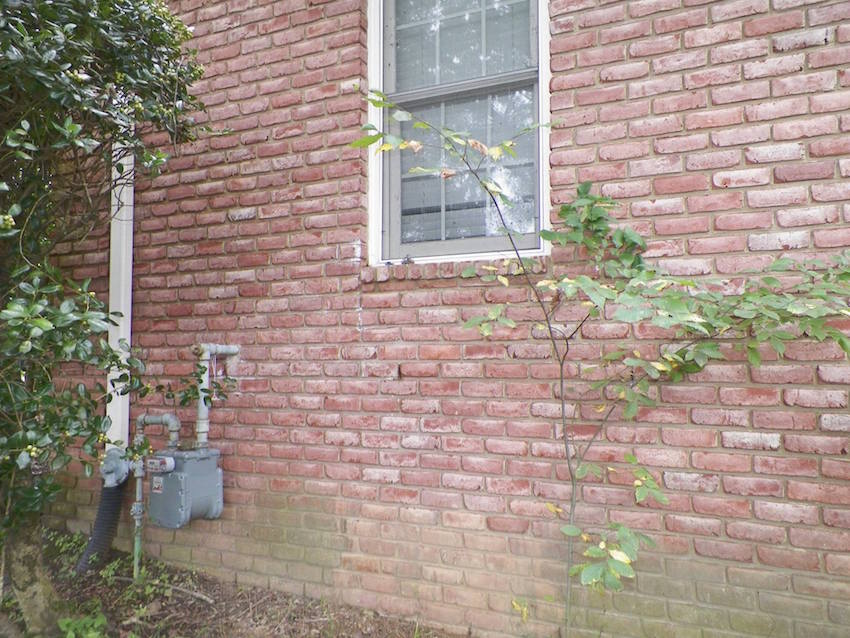
David Glover, aka the Bartlett Bee Whisperer, rescues and safely relocates honeybees. He recently took on a new client in Germantown, Tennessee.
The delicate and daunting task required the removal of a giant swarm of bees that lived behind the brick exterior of the house.
David was called after a local pest control service failed to remove the hive — and the company attempted to kill the bees in the process.
"Here's the wall," David wrote on Facebook. "The pest control company has tried to kill the hive, unsuccessfully."
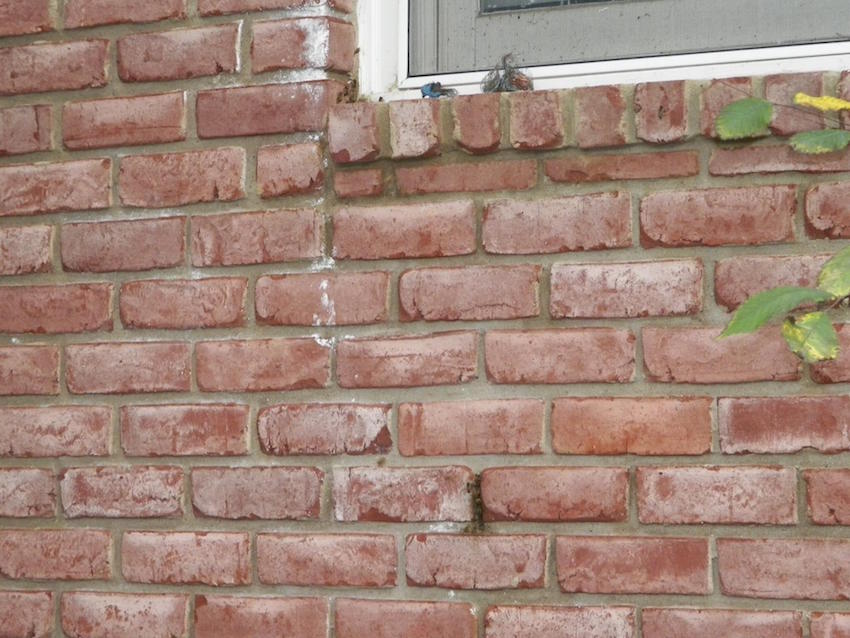
"The bees were entering the wall via a weep hole between the bricks (dark area bottom/center) as well as via a gap between the bricks and the corner of the window."
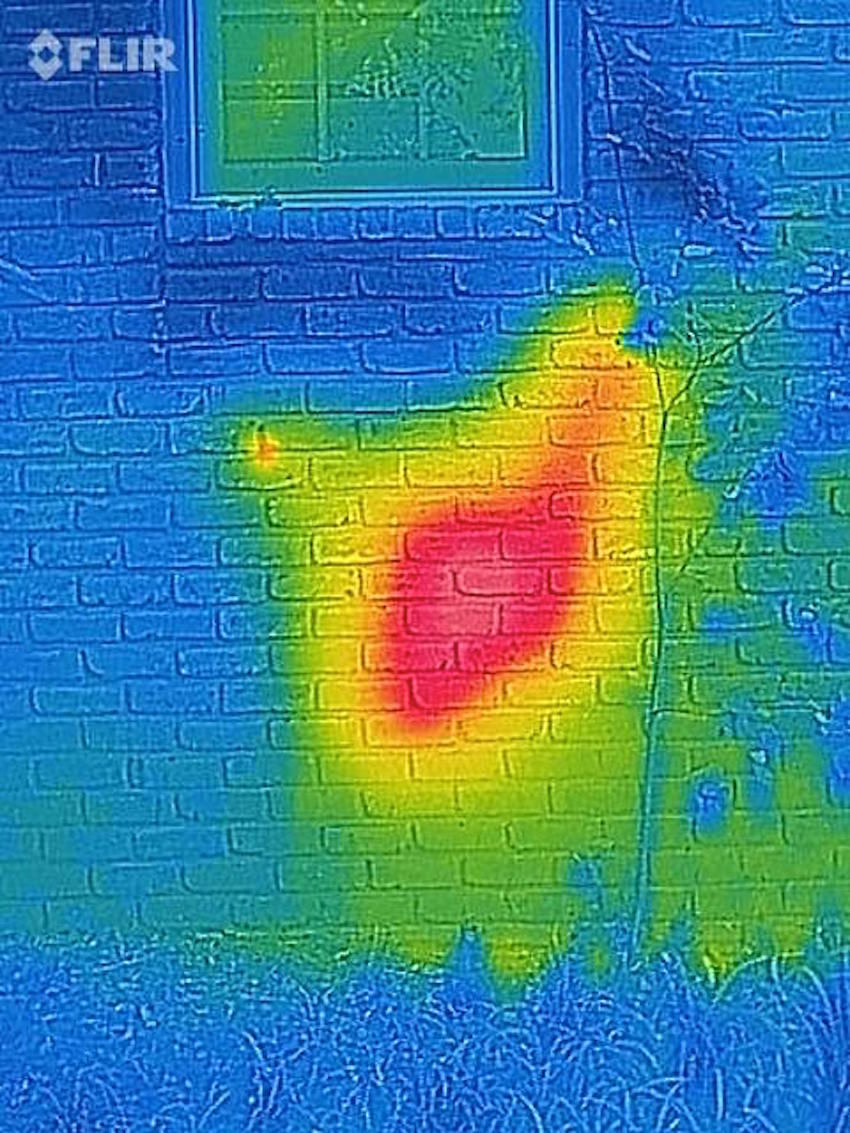
"Well, the large red spot is the brood area of the hive. The thin red line on the left is the weep hole entrance."
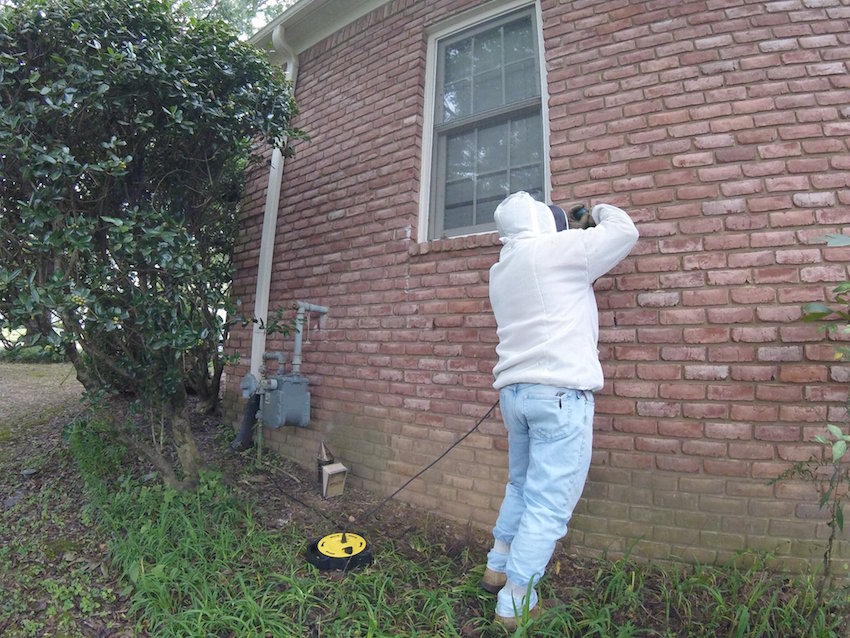
"The first thing I did after smoking the entrances was to spray some Honey Bandit in the small hole I'm drilling in this photo.
"That helped keep the bees from running up the wall when I kicked on the hammer drill."
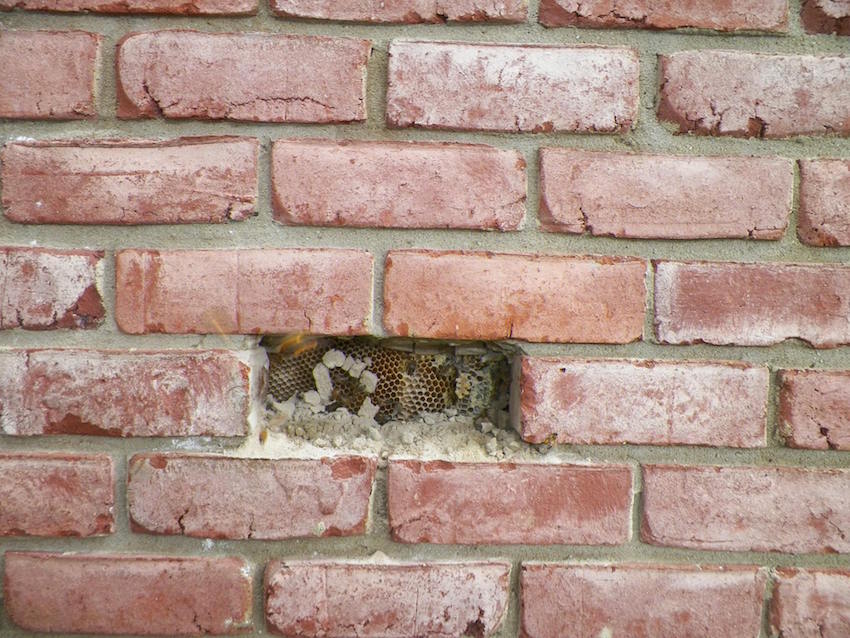
"The first brick is out in one piece."

"Two rows of bricks out."

"Five rows out."
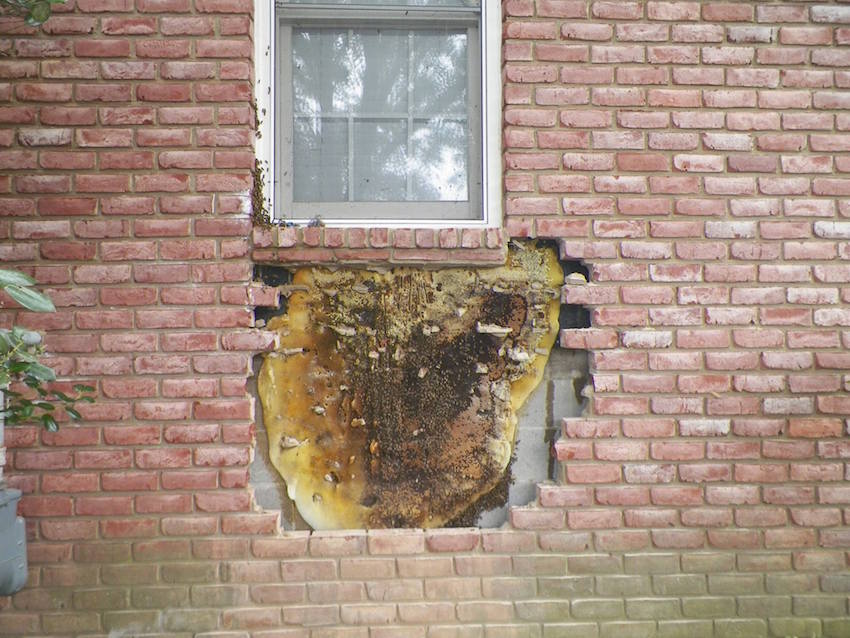
"This is what I mean by AWESOME. The comb wasn't overly-attached to the bricks AND this is one of the largest single pieces of comb I've ever seen!
"With the exception of seven narrow honey combs in the center top of the hive, this was two large flat combs."
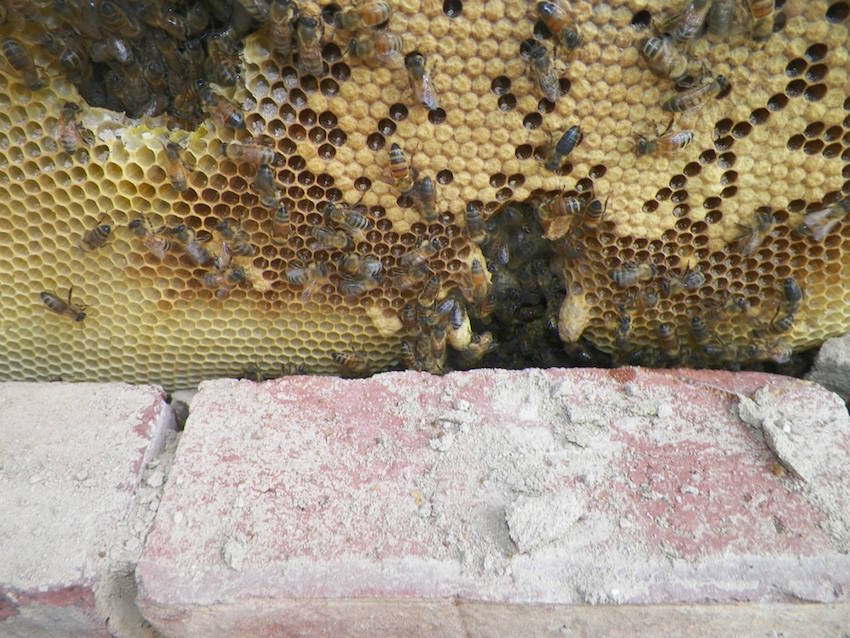
"At the bottom of the front comb were five of the thirteen capped queen cells in this hive."

"Removing a slice of brood comb holding seven of the thirteen queen cells.
"On the left side of the hive I found a large number of dead bees. I assume this is where the pest control applicator tried to kill the colony.
"The wax prevented the spread of the pesticide."
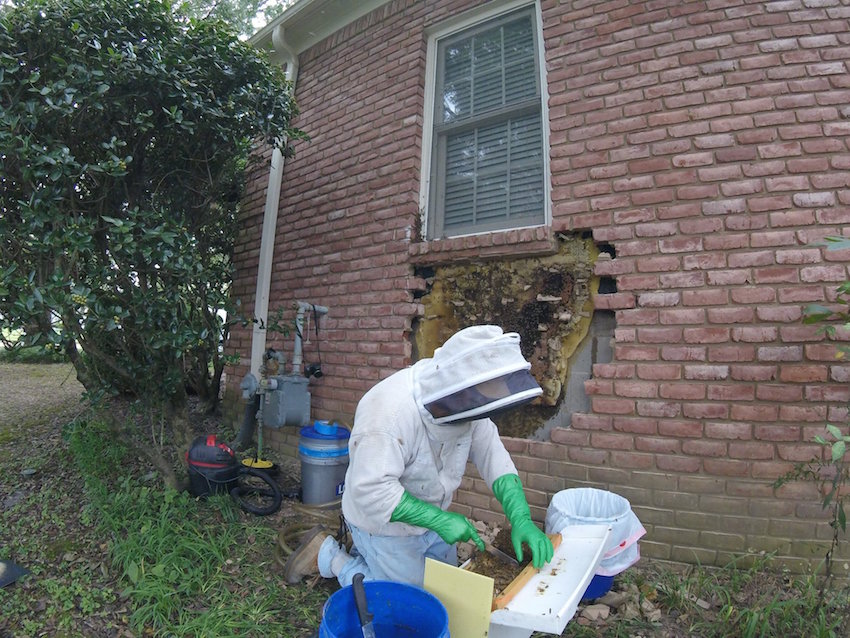
"Rubber banding the second brood comb."
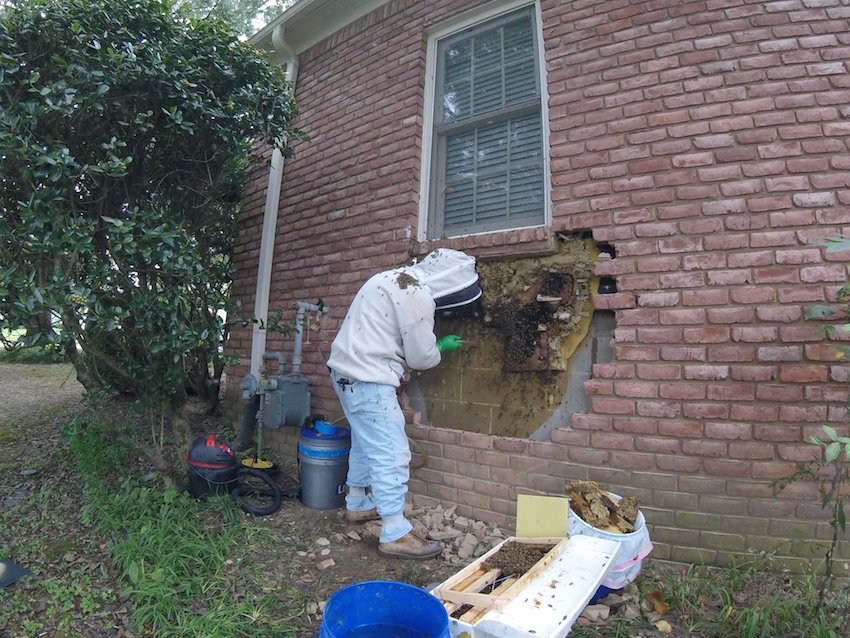
"At the vertical mid-line of the hive, the combs joined into a convoluted mess.
"Slow process removing combs in the middle section where they were all interconnected and tunneled. It's like the construction crew in this part of the hive was dropping acid. No, that's not an angel on my shoulder. That was a fun cluster of honey bees singing in my ear.
"These bees were extremely cooperative to be queenless."
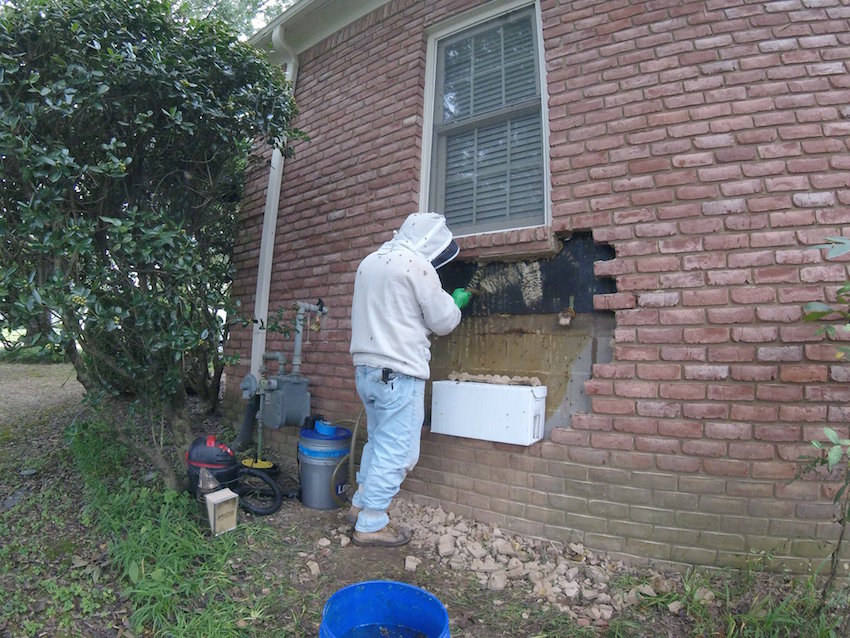
"While I was cleaning up and organizing to leave, I placed the nuc box in the hole to gather returning foragers."
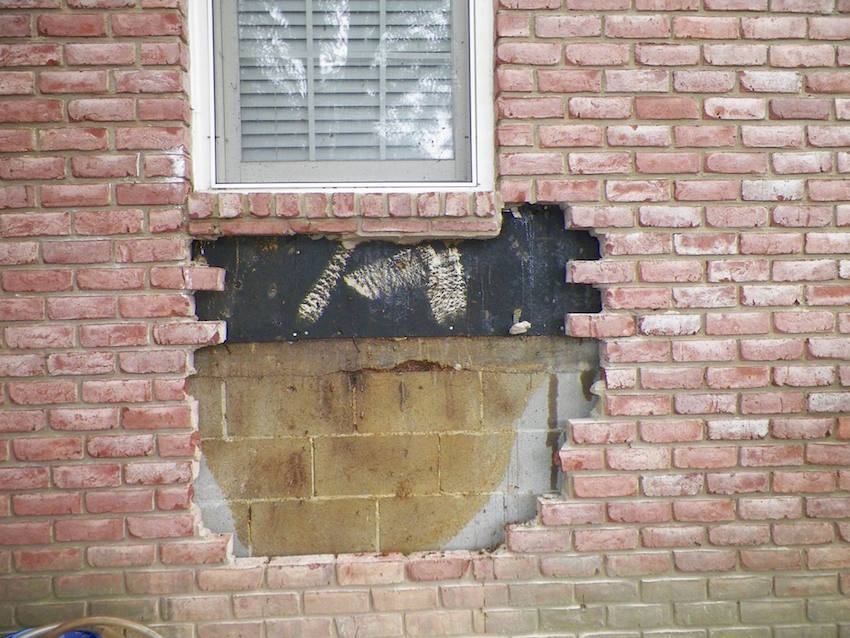
"Done! The tan area came from thousands of dirty little feet.
"Kind of cool when you think about all the times your Mom told you to wipe your feet before coming into the house.
"Mom was right, 'You'll track up the place.'"
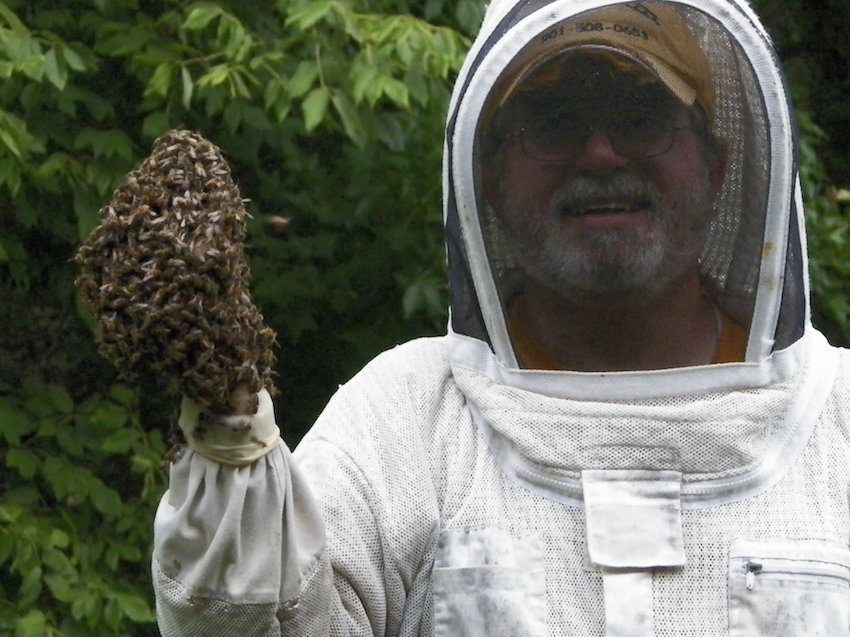
It's so amazing that the Bartlett Bee Whisperer was able to successfully remove and relocate these honeybees without hurting them.




